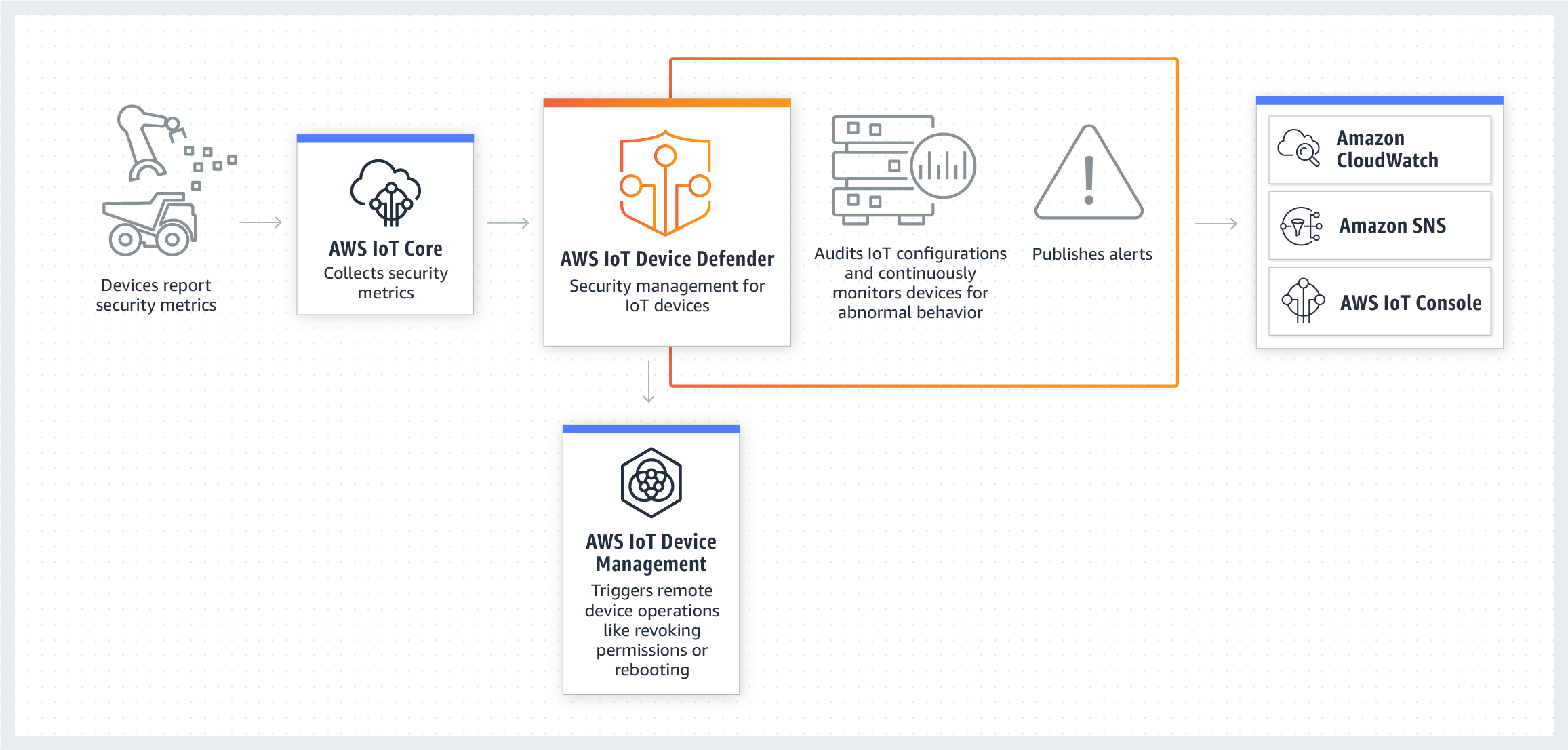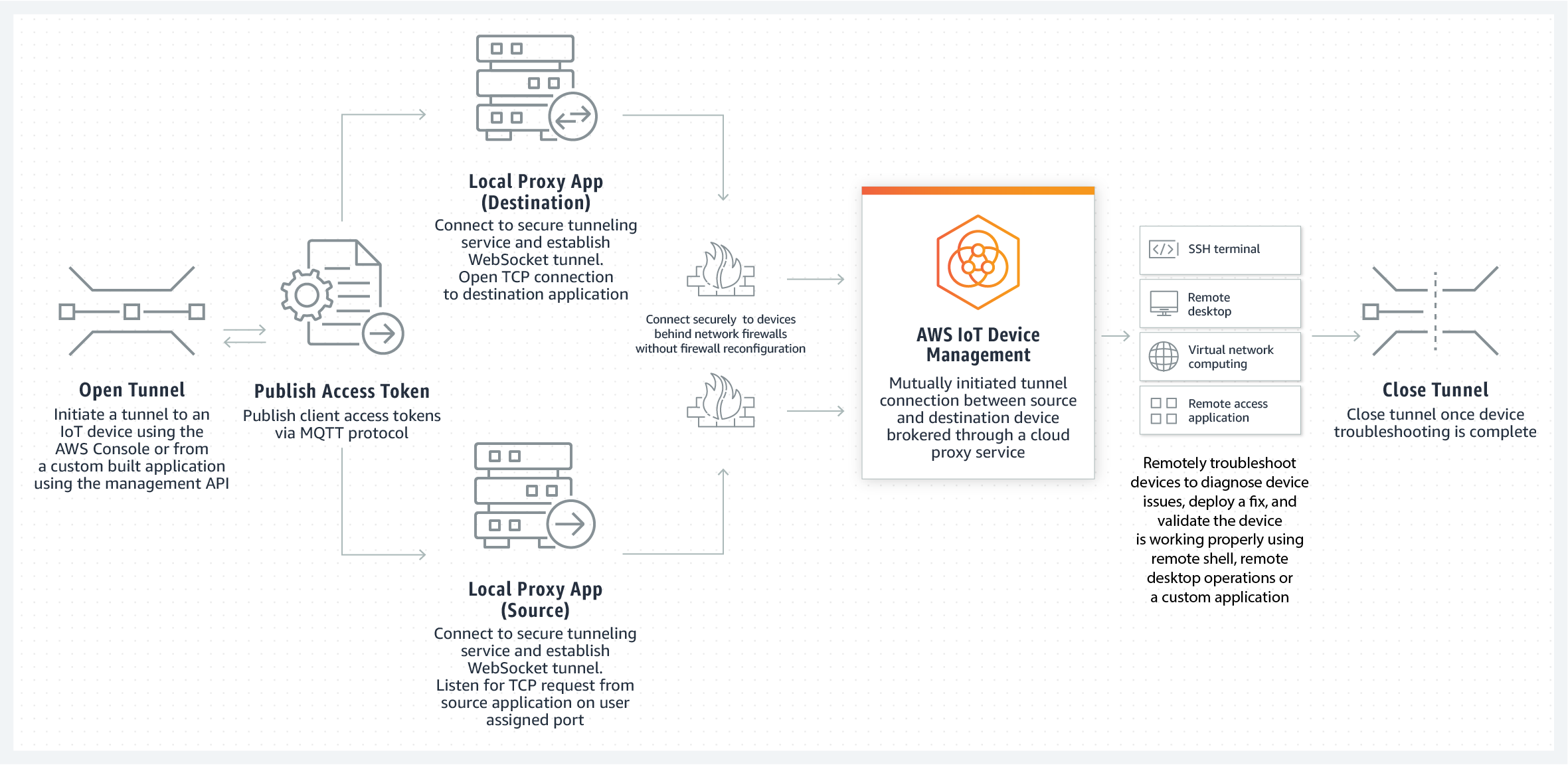How To Download And Set Up IoT Devices With SSH On AWS Ubuntu: A Comprehensive Guide
Are you looking to integrate IoT devices with AWS using Ubuntu and SSH? You're in the right place. In today's interconnected world, the Internet of Things (IoT) has become a cornerstone of technological advancement. From smart homes to industrial automation, IoT devices are transforming how we interact with the world. However, setting up these devices securely and efficiently can be challenging. This article will guide you through the process of downloading and configuring IoT devices using SSH on AWS Ubuntu, ensuring a seamless and secure experience.
IoT devices rely on robust platforms like AWS (Amazon Web Services) to manage data, perform analytics, and ensure secure communication. AWS provides a scalable and reliable infrastructure for IoT deployments, while Ubuntu, a popular Linux distribution, serves as an excellent operating system for IoT gateways and servers. By leveraging SSH (Secure Shell), you can remotely manage and configure your IoT devices, ensuring secure access and control.
This guide is designed to help you understand the entire process, from setting up your AWS environment to configuring SSH access for IoT devices. Whether you're a developer, IT professional, or tech enthusiast, this article will provide you with step-by-step instructions, expert tips, and trusted resources to help you succeed. Let's dive in and explore how to harness the power of IoT with AWS Ubuntu and SSH.
- Movierulz Kannada 2024 Download
- Eve Plumb
- Daddario Tits
- Movierulz Telugu Movies 2024 Page
- Jonathan Rhys Meyers
Table of Contents
- Introduction to IoT and AWS
- Setting Up an AWS Ubuntu Instance
- Understanding SSH and Its Importance
- Configuring SSH on AWS Ubuntu
- Downloading and Installing IoT Device Software
- Connecting IoT Devices to AWS
- Securing Your IoT Setup
- Best Practices for IoT and SSH
- Troubleshooting Common Issues
- Conclusion
Introduction to IoT and AWS
The Internet of Things (IoT) refers to the network of physical devices embedded with sensors, software, and connectivity that enables them to exchange data. These devices range from simple home appliances to complex industrial machines. AWS, a leading cloud service provider, offers a suite of IoT services that simplify device management, data processing, and security.
One of the key advantages of using AWS for IoT is its scalability. AWS IoT Core, for example, allows you to connect billions of devices and process trillions of messages. This scalability ensures that your IoT infrastructure can grow with your needs. Additionally, AWS provides robust security features, such as encryption and access control, to protect your IoT devices and data.
Why Use Ubuntu for IoT?
Ubuntu is a popular choice for IoT deployments due to its open-source nature, extensive community support, and compatibility with various hardware platforms. It also offers long-term support (LTS) versions, ensuring stability and security for IoT applications. With Ubuntu, you can easily set up and manage IoT gateways, servers, and edge devices.
- Adrianne Palicki
- Nasims News On Payment Today
- Subhashree Viral Videos
- Morgan Freeman
- Has Madeline Mccann Been Found
Setting Up an AWS Ubuntu Instance
Before you can start configuring IoT devices, you need to set up an Ubuntu instance on AWS. Follow these steps to create and configure your instance:
Step 1: Launching an EC2 Instance
1. Log in to your AWS Management Console.
2. Navigate to the EC2 Dashboard and click "Launch Instance."
3. Choose an Ubuntu AMI (Amazon Machine Image) from the list of available options.
4. Select an instance type based on your requirements (e.g., t2.micro for testing).
5. Configure instance details, such as network settings and storage.
6. Add tags to organize and identify your instance.
7. Set up a security group to control inbound and outbound traffic.
8. Review and launch your instance.
Step 2: Connecting to Your Instance
Once your instance is running, you can connect to it using SSH. Download the private key (.pem file) provided during the instance setup and use it to establish a secure connection:
ssh -i "your-key.pem" ubuntu@your-instance-ip
Understanding SSH and Its Importance
SSH (Secure Shell) is a cryptographic network protocol used to securely access and manage remote systems. It provides a secure channel over an unsecured network, ensuring confidentiality and integrity of data. For IoT deployments, SSH is crucial for remote device management, software updates, and troubleshooting.
Key Features of SSH
- Encryption: Protects data from eavesdropping and tampering.
- Authentication: Verifies the identity of users and devices.
- Port Forwarding: Enables secure tunneling of network traffic.
Configuring SSH on AWS Ubuntu
Configuring SSH on your AWS Ubuntu instance is essential for secure access. Follow these steps to set up SSH:
Step 1: Update and Upgrade Your System
Before configuring SSH, ensure your system is up to date:
sudo apt update && sudo apt upgrade -y
Step 2: Install OpenSSH Server
Install the OpenSSH server package to enable SSH access:
sudo apt install openssh-server -y
Step 3: Configure SSH Settings
Edit the SSH configuration file to enhance security:
sudo nano /etc/ssh/sshd_config
Make the following changes:
- Change the default SSH port (optional).
- Disable root login by setting "PermitRootLogin no."
- Enable key-based authentication by setting "PasswordAuthentication no."
Downloading and Installing IoT Device Software
Once your AWS Ubuntu instance is ready, you can proceed to download and install the necessary software for your IoT devices. This section will guide you through the process.
Step 1: Installing AWS IoT SDK
Download and install the AWS IoT SDK for your device:
git clone https://github.com/aws/aws-iot-device-sdk-python.git cd aws-iot-device-sdk-python sudo python3 setup.py install
Step 2: Configuring Device Certificates
Generate and configure device certificates for secure communication with AWS IoT Core:
aws iot create-keys-and-certificate --set-as-active
Connecting IoT Devices to AWS
After setting up your AWS Ubuntu instance and installing the necessary software, you can connect your IoT devices to AWS. This process involves registering devices, configuring policies, and establishing secure connections.
Step 1: Registering Devices in AWS IoT Core
Register your IoT devices in the AWS IoT Core console:
1. Navigate to the AWS IoT Core dashboard.
2. Click "Register a thing" and follow the prompts.
3. Assign a unique name and attach a policy to your device.
Step 2: Testing Device Connectivity
Use the AWS IoT Device Tester to verify connectivity:
python3 test_device_connectivity.py
Securing Your IoT Setup
Security is a critical aspect of IoT deployments. Follow these best practices to protect your devices and data:
1. Use Strong Authentication
Implement multi-factor authentication (MFA) and key-based access for all devices and users.
2. Encrypt Data in Transit
Use TLS/SSL encryption for all communication between devices and AWS.
3. Regularly Update Software
Keep your IoT devices and AWS Ubuntu instance up to date with the latest security patches.
Best Practices for IoT and SSH
Adopting best practices ensures the reliability and security of your IoT setup. Here are some recommendations:
1. Limit SSH Access
Restrict SSH access to trusted IP addresses using security groups.
2. Monitor SSH Logs
Regularly review SSH logs to detect and respond to unauthorized access attempts.
Troubleshooting Common Issues
Despite careful planning, you may encounter issues with your IoT setup. Here are some common problems and their solutions:
1. SSH Connection Failures
Ensure your security group allows inbound SSH traffic on the correct port.
2. Device Registration Errors
Verify that your device certificates and policies are correctly configured.
Conclusion
In this guide, we've explored how to download and set up IoT devices using SSH on AWS Ubuntu. From launching an AWS instance to securing your IoT setup, we've covered every step to ensure a seamless experience. By following these instructions and adopting best practices, you can harness the full potential of IoT technology while maintaining security and reliability.
We encourage you to share your thoughts and experiences in the comments below. If you found this guide helpful, don't hesitate to share it with others. For more articles on IoT and AWS, explore our website and stay updated with the latest trends and technologies.


Detail Author:
- Name : Marques Langworth
- Username : jlittle
- Email : heath94@yahoo.com
- Birthdate : 1994-12-06
- Address : 708 Kiley Squares Wunschborough, MO 10376-9777
- Phone : +1 (413) 292-3281
- Company : Robel, Streich and Hane
- Job : Sales Person
- Bio : Ipsa provident corporis rem. Asperiores necessitatibus sunt omnis autem voluptas consequatur optio. Eius nam est distinctio pariatur. Excepturi repellendus et laboriosam.
Socials
twitter:
- url : https://twitter.com/heath_treutel
- username : heath_treutel
- bio : Optio magnam aliquam deleniti et et. Quod aut blanditiis amet labore omnis eligendi. Modi excepturi qui at magnam itaque.
- followers : 5135
- following : 276
instagram:
- url : https://instagram.com/heath.treutel
- username : heath.treutel
- bio : Dolorem quis eaque id quam eos qui. Aliquid molestiae est nemo aut eos tempore aut.
- followers : 6991
- following : 2654